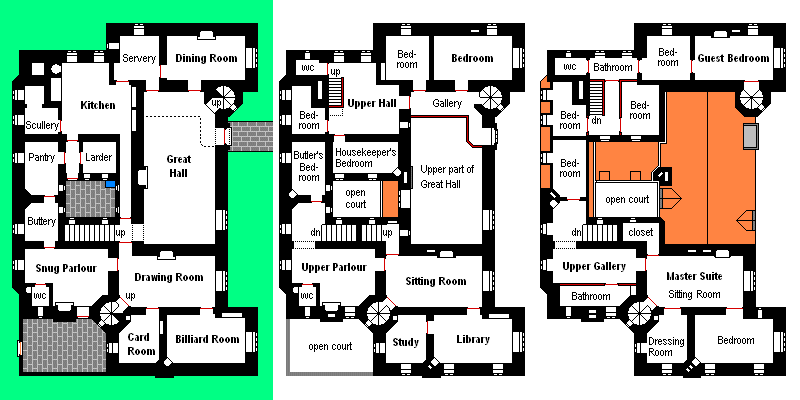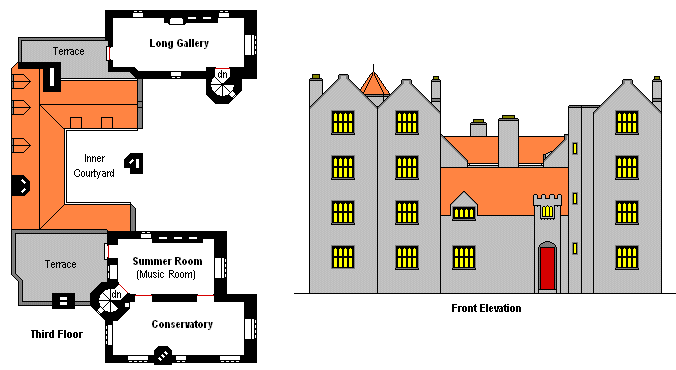
The Follisham/Gruntley family are descendents of the Compton-Ginnetts whose forebear, John Gruntley, was a cousin of the then squire of Fairwood Manor in 1812. The squire fancied himself a Francophile who revered Napoleon, at which John took umbrage and left the manor to build his own, north of Fairwood on the Laxminster High Road. It is in the Jacobean style -- a period John Gruntley was very fond of. He was able to finance construction of this fine building with his profits as an arms manufacturer in Sheffield, supplying swords and guns to Wellington's army. The family long ago reconciled, but still maintain this house for the large extended clan of Compton-Ginnett. They were able to fend off ruinous death duties in the 1920s and 1940s because their fortune was largely invested in South Africa and what was then Southern Rhodesia. There are still some Gruntleys in Zimbabwe, although rumour has it that they have been forced to relocate to Mozambique. George Gruntley is the current lord of the manor, the grounds of which extend for a mile along the north side of the High Road above Fairwood Forest.

The Great Hall is two storeys high, with a gallery and a large fireplace. Its walls are covered with swords and rifles from the Gruntley Sword Company, dating to the early 19th Century, arranged in circles and arcs. Drawing rooms and the like are in the south wing, as well as the Master Bedroom Suite; additional accommodation is in the north wing and along the west side of the house. There is a small inner courtyard, as well as another small court at the southwest corner opening out into the garden. The kitchen portion of the house at the northeast corner is rather elaborate. Two bedrooms for visitors, or for children of the house, are entered from the hall gallery. Servants live on the first floor over the kitchen areas. A large Guest Bedroom and a room for their servants are in the north wing, as well as more bedrooms. Note the small castellated projection over the main doorway -- this is the only concession to 'fortification' in this house, although the walls are thick. The carved inscription over the front door simply says "Waterloo 1815."

|
This is a three-storey building, with an additional floor in the south wing containing the Conservatory and what is called the Summer Room (also used as the Music Room) and in the north wing -- the Long Gallery, which has some interesting Impressionist paintings. These upper floors open onto small terraces on the west side, facing the Fells. |
|
As is now well known, the victim was young Jim Follisham, wastrel son of the squire of Gruntley House, who had conspired with the murderer Louise Havering, a notorious cat burglar from Manchester and the most famous female wrongdoer of her times, to steal the painting. Both of them had entered via the terrace together. They had of course locked themselves in, in case they should be disturbed. And the sword had been left there earlier by the butler, as he was in the habit of carrying it on his rounds late at night when locking up. (As a child, young Jim had been amused to espy him on the hall gallery fighting a mock swordfight with an imaginary burglar.) It was a sordid case of thieves falling out. Of course, she had fled by the terrace, climbing down the drainpipe. She was not apprehended until 1945, when she had been demobbed as a WRAF and reverted to her life of crime. | |